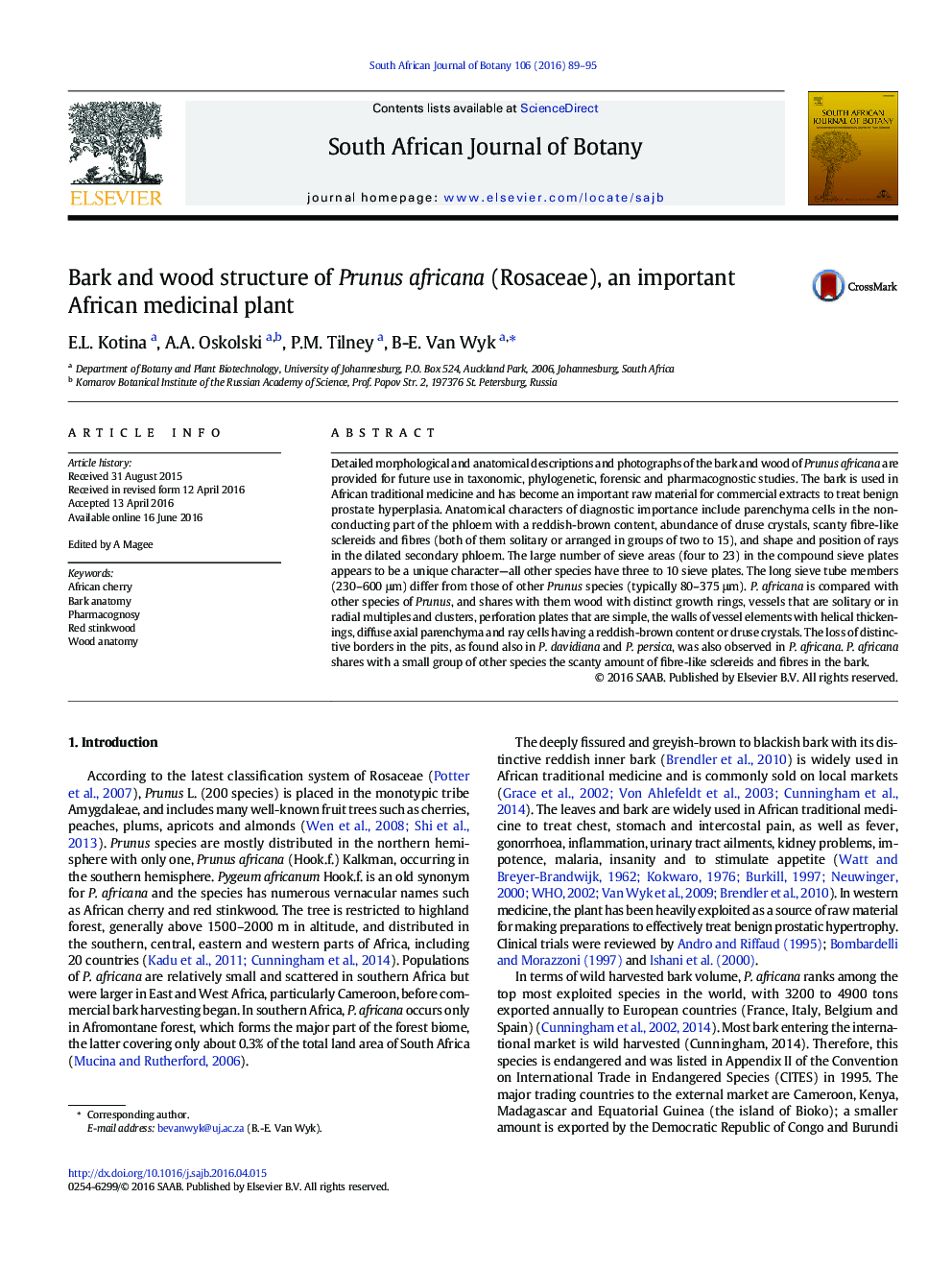| Article ID | Journal | Published Year | Pages | File Type |
|---|---|---|---|---|
| 4520192 | South African Journal of Botany | 2016 | 7 Pages |
•Formal descriptions of the bark and wood anatomy of Prunus africana are provided.•Combinations of anatomical characters are useful for identification and comparative taxonomy.•Mature bark has distinctive parenchyma cells with a reddish-brown content.•Phloem and xylem have an abundance of druse crystals.•The wood vessels show a loss of distinctive borders in the pits.
Detailed morphological and anatomical descriptions and photographs of the bark and wood of Prunus africana are provided for future use in taxonomic, phylogenetic, forensic and pharmacognostic studies. The bark is used in African traditional medicine and has become an important raw material for commercial extracts to treat benign prostate hyperplasia. Anatomical characters of diagnostic importance include parenchyma cells in the non-conducting part of the phloem with a reddish-brown content, abundance of druse crystals, scanty fibre-like sclereids and fibres (both of them solitary or arranged in groups of two to 15), and shape and position of rays in the dilated secondary phloem. The large number of sieve areas (four to 23) in the compound sieve plates appears to be a unique character—all other species have three to 10 sieve plates. The long sieve tube members (230–600 μm) differ from those of other Prunus species (typically 80–375 μm). P. africana is compared with other species of Prunus, and shares with them wood with distinct growth rings, vessels that are solitary or in radial multiples and clusters, perforation plates that are simple, the walls of vessel elements with helical thickenings, diffuse axial parenchyma and ray cells having a reddish-brown content or druse crystals. The loss of distinctive borders in the pits, as found also in P. davidiana and P. persica, was also observed in P. africana. P. africana shares with a small group of other species the scanty amount of fibre-like sclereids and fibres in the bark.
